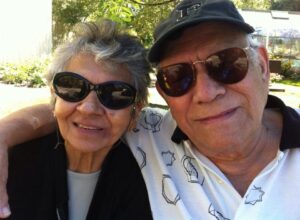I wrote a novel in 2007 based on a trip I took to Peru in 2002. The country had intrigued me; emerging from a revolution that had recently ended and that still showed traces in bombed-out buildings, the underlying vein of poverty that intruded despite the bright colours of the clothes and ponchos worn by locals, the daunting heights of the Andes and the threat of altitude sickness that lurked with every painful step along the rugged Inca trail, and the magnificent ruin that awaited us at the end of the road: Machu Picchu. There were unpleasant sights too: favelas that encroached on historic ruins, one civilization threatening another even in the 21st century, like the Inca had done with their predecessors, or the Spanish with the Inca later on; traffic chaos resulting from urban drift and from traffic signals that were rarely obeyed; pickpockets in the Plazas de Armas in the major cities. An interesting country in which to set a novel, and I did.
My novel languished for years, enduring several critical beta readers and many re-writes, biding its time to be born. And that time arrived when it was finally selected for publication in the fall of 2015. Wondering whether my image of the country still held true, I returned to Peru last month for some final fact-checking. I’m glad I did.
Gone were the green-uniformed money changers who hung about the streets of the capital, gone too were their counterparts, prostitutes looking for a gringo tourist, to relieve him of his stress and his newly exchanged Sol. Gone were the bombed-out buildings, replaced by a condo-construction frenzy to accommodate a burgeoning middle class. Even my former hotel was boarded up and slated for demolition to make way for a more modern building. New parks and stadiums had sprung up, and there were traffic policewomen (women were considered more honest than men) to supplement enforcement at road intersections. And yet there was still the “donkey belly sky” over Lima, the traffic was denser, and the politics looser, but the crowds walked with a more confident step as 75% of the Limenos (residents of Lima) were now entrepreneurs, and the poverty ridden class had shrunk from 75% to 25% . A mining boom and better relationships with developed nations were being attributed to the economic uptick that had begun in 2005, and, despite one-off slumps, showed no signs of abating.
In the Andes, a similar building boom was underway. Cusco had doubled in size with new construction climbing the walls of the valley of the former Inca capital. The smattering of shacks on either side of a railway line that had been the gateway to Machu Picchu, Aguas Calientes, was now spreading out in all directions, around the swollen Urubamba River. Towns along the Sacred Valley were littered with similar works-in-progress: buildings with their second or third floors incomplete. Considering that the Inca took over a hundred years to complete some of their structures by quarrying large stones and interlocking them through feats of great strength and patience, this state of incompleteness in the modern Peru looked appropriate. At least, the modern Peruvians were extending existing dwellings and not stamping out the old in favour of the new as their Inca and Spanish predecessors had done to assert that “Might was Right.”
And as for my novel, it will remain rooted in the Old Peru with only some details corrected in light of my recent fact-checking. Like the Inca story, it will be a part of the history that Peru needs to preserve as it rushes headlong into progress with other developing nations, as if grabbing for lost time. And yet the timelessness of its old story is the most endearing attraction and the mark of character of that country in a world that is moving towards homogeneity in this era of global sameness.



